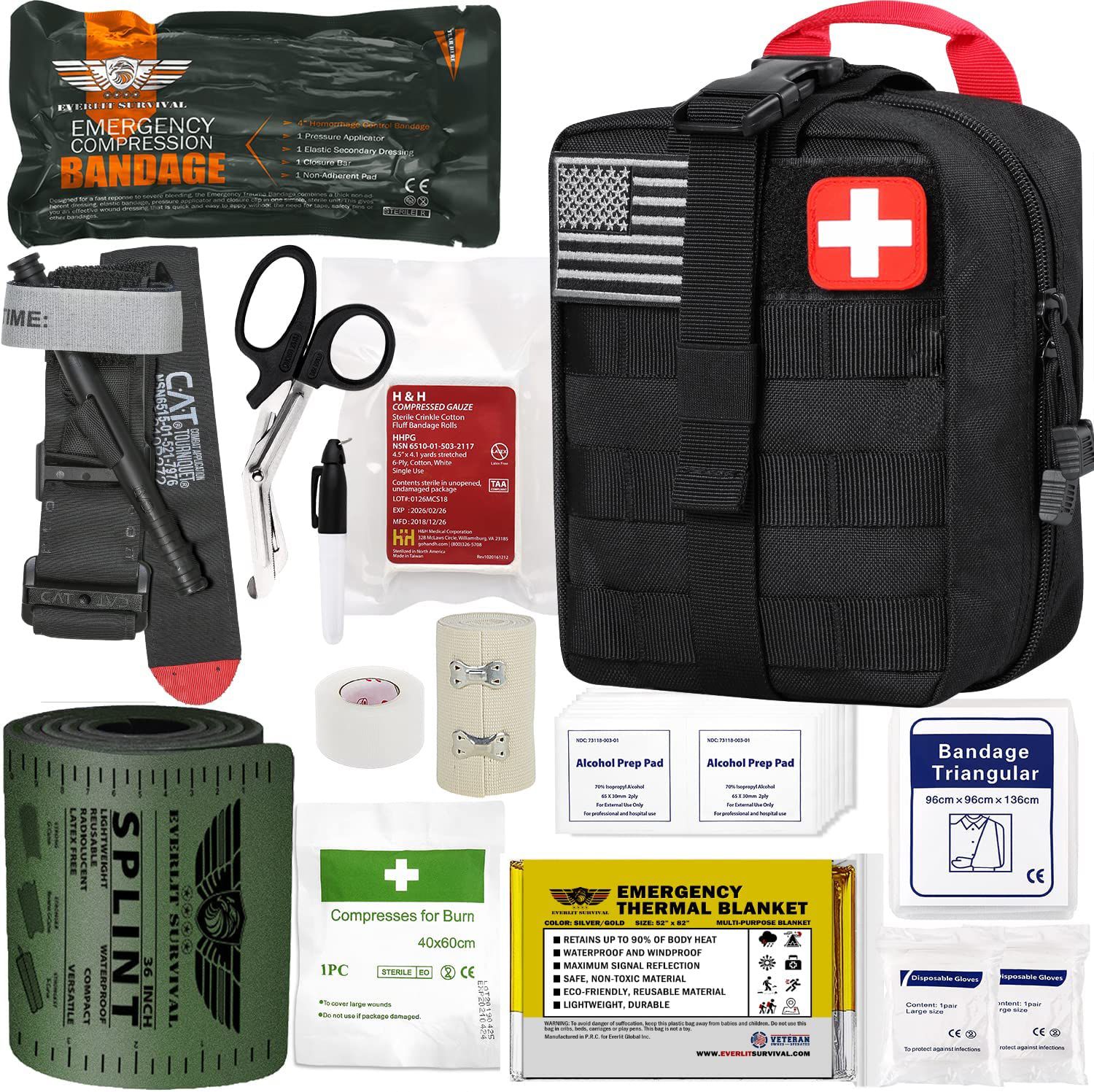
GET A QUOTE
How Do You Treat a Bleeding Wound?
A bleeding wound requires immediate attention to prevent excessive blood loss and reduce the risk of infection. Whether it's a minor cut or a severe injury, proper treatment is crucial.Understanding how to stop bleeding effectively using bandages, kits, and pressure techniques can make a significant difference in an emergency. Knowing how to treat a bleeding wound and clean a bleeding wound properly ensures faster recovery and reduces infection risks. In this guide, we will cover essential steps for treating a bleeding wound and highlight advanced solutions like the IFAK Tactical Kit from Risen Medical.
Why Is It Important to Take First Aid?
First aid knowledge is essential for handling medical emergencies effectively. Here’s why:
- Saves Lives – Quick action can prevent excessive blood loss and increase survival chances.
- Reduces Recovery Time – Proper wound care minimizes complications and speeds up healing.
- Prevents Infections – Cleaning and dressing wounds correctly reduces the risk of infections.
- Boosts Confidence – Knowing what to do in an emergency helps individuals stay calm and act decisively.
- Essential for Outdoor Enthusiasts & Professionals – Hikers, athletes, and those in high-risk jobs must be equipped to handle injuries.
Choosing the Right Bandage for a Bleeding Wound
Not all bandages are created equal. Different types serve various purposes:
- Adhesive Bandages – Best for minor cuts and scrapes.
- Gauze Pads – Absorb blood and protect larger wounds.
- Compression Bandages – Apply pressure to control bleeding.
- Hemostatic Bandages – Contain clotting agents for rapid blood control.
Steps to Treat a Bleeding Wound
1. Assess the Severity of the Wound
- Before taking action, determine whether the wound is minor or severe.
- Minor wounds (small cuts or scrapes) require simple cleaning and bandaging.
- Severe wounds (deep cuts, heavy bleeding, or arterial injuries) demand immediate first aid and possibly emergency medical help.
2. Apply Direct Pressure
This method is one of the fastest ways to stop a bleeding cut before it worsens.
- Use a clean cloth, sterile gauze, or bandage to apply firm pressure to the wound.
- Maintain pressure for several minutes to help the blood clot.
- If bleeding persists, do not remove the initial bandage; instead, place another layer on top.
3. Elevate the Wounded Area
- If possible, raise the injured limb above the level of the heart.
- Elevation reduces blood flow to the wound and can help control bleeding.
4. Use a Bandage to Secure the Wound
- Once bleeding slows, clean the bleeding wound gently with water and mild soap to avoid further irritation.
- Cover the wound with a sterile bandage to protect it from infection.
- Change the bandage regularly and monitor for signs of infection.
5. Apply a Tourniquet for Severe Bleeding
- In extreme cases, such as arterial bleeding, a tourniquet may be necessary.
- Place it above the wound (closer to the heart) and tighten until the bleeding stops.
- Tourniquets should only be used as a last resort and require professional medical attention as soon as possible.
6. Use Hemostatic Agents for Faster Clotting
- Hemostatic dressings contain special substances that promote clotting.
- These are particularly useful in high-risk situations, such as military or outdoor settings.
- These agents are especially effective when you need to stop a bleeding cut in outdoor or combat scenarios.
7. Seek Medical Attention When Necessary
- If bleeding does not stop, is deep, or shows signs of infection, seek professional medical care.
- Watch for redness, swelling, pus, or persistent pain around the wound.
- No matter how well you treat a bleeding wound, medical consultation is crucial if symptoms worsen.
Risen Medical offers Reliable First Aid Kit
Having a well-equipped first aid kit can save lives in an emergency. The IFAK Tactical Kit from Risen Medical is an essential tool for handling bleeding wounds efficiently.
Features of the IFAK Tactical Kit:
- Comprehensive Medical Supplies: Includes compression bandages, tourniquets, hemostatic agents, adhesive tape, trauma shears, and more for effective emergency response.
- Reliable Bleeding Control: Designed to stop bleeding quickly and efficiently, ensuring life-saving interventions before professional help arrives.
- High-Quality and Durable: Crafted with precision and top-tier materials to withstand demanding situations.
- Organized and Accessible: Meticulously arranged components for quick access during critical moments.
- Versatile Use: Ideal for tactical professionals, first responders, and outdoor enthusiasts.
- Manufacturer Expertise: Produced by a trusted provider with a focus on safety, reliability, and innovation.
- Essential for Emergencies: A must-have kit for preparedness, ensuring confidence in handling critical situations.
Additional Tips for Bleeding Wound Care
- Avoid removing objects embedded in the wound; leave them for medical professionals.
- Keep pressure steady until bleeding stops.
- Monitor for shock symptoms, such as pale skin, rapid breathing, or fainting.
- Ensure proper wound hygiene to prevent infections.
Conclusion
Treating a bleeding wound promptly, knowing how to clean a bleeding wound, and understanding how to stop a bleeding cut can prevent serious complications. Using bandages, pressure techniques, and tourniquets when necessary ensures the best chance for recovery. Risen Medical is a trusted provider of high-quality medical and first aid supplies, committed to innovation and safety. Treating a bleeding wound quickly with proper tools like the IFAK Tactical Kit can prevent severe complications. Bandages, pressure techniques, and tourniquets are essential for effective wound care. With Risen Medical’s reliable products, you can confidently handle emergencies. Be prepared, stay informed, and ensure safety with the right first aid supplies.

